Stochastic phenotypes in RAS-dependent developmental diseases
- PMID: 36706752
- PMCID: PMC10026697
- DOI: 10.1016/j.cub.2023.01.008
Stochastic phenotypes in RAS-dependent developmental diseases
Abstract
Germline mutations upregulating RAS signaling are associated with multiple developmental disorders. A hallmark of these conditions is that the same mutation may present vastly different phenotypes in different individuals, even in monozygotic twins. Here, we demonstrate how the origins of such largely unexplained phenotypic variations may be dissected using highly controlled studies in Drosophila that have been gene edited to carry activating variants of MEK, a core enzyme in the RAS pathway. This allowed us to measure the small but consistent increase in signaling output of such alleles in vivo. The fraction of mutation carriers reaching adulthood was strongly reduced, but most surviving animals had normal RAS-dependent structures. We rationalize these results using a stochastic signaling model and support it by quantifying cell fate specification errors in bilaterally symmetric larval trachea, a RAS-dependent structure that allows us to isolate the effects of mutations from potential contributions of genetic modifiers and environmental differences. We propose that the small increase in signaling output shifts the distribution of phenotypes into a regime, where stochastic variation causes defects in some individuals, but not in others. Our findings shed light on phenotypic heterogeneity of developmental disorders caused by deregulated RAS signaling and offer a framework for investigating causal effects of other pathogenic alleles and mild mutations in general.
Published by Elsevier Inc.
Conflict of interest statement
Declaration of interests The authors declare no competing interests.
Figures
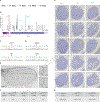
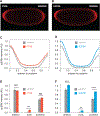
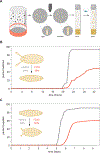
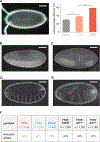

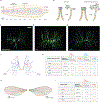
Similar articles
-
Divergent effects of intrinsically active MEK variants on developmental Ras signaling.Nat Genet. 2017 Mar;49(3):465-469. doi: 10.1038/ng.3780. Epub 2017 Feb 6. Nat Genet. 2017. PMID: 28166211 Free PMC article.
-
A gain-of-function germline mutation in Drosophila ras1 affects apoptosis and cell fate during development.PLoS One. 2011;6(8):e23535. doi: 10.1371/journal.pone.0023535. Epub 2011 Aug 12. PLoS One. 2011. PMID: 21858158 Free PMC article.
-
Network analysis of differential Ras isoform mutation effects on intestinal epithelial responses to TNF-α.Integr Biol (Camb). 2013 Nov;5(11):1355-65. doi: 10.1039/c3ib40062j. Epub 2013 Oct 2. Integr Biol (Camb). 2013. PMID: 24084984 Free PMC article.
-
Deregulated Ras signaling in developmental disorders: new tricks for an old dog.Curr Opin Genet Dev. 2007 Feb;17(1):15-22. doi: 10.1016/j.gde.2006.12.004. Curr Opin Genet Dev. 2007. PMID: 17208427 Review.
-
New Insights from Drosophila into the Regulation of EGFR Signaling.Methods Mol Biol. 2017;1652:37-42. doi: 10.1007/978-1-4939-7219-7_2. Methods Mol Biol. 2017. PMID: 28791632 Review.
Cited by
-
Mitogen signaling strength and duration can control cell cycle decisions.Sci Adv. 2024 Jul 5;10(27):eadm9211. doi: 10.1126/sciadv.adm9211. Epub 2024 Jul 5. Sci Adv. 2024. PMID: 38968359 Free PMC article. Review.
-
Review: Cancer and neurodevelopmental disorders: multi-scale reasoning and computational guide.Front Cell Dev Biol. 2024 Jul 2;12:1376639. doi: 10.3389/fcell.2024.1376639. eCollection 2024. Front Cell Dev Biol. 2024. PMID: 39015651 Free PMC article. Review.
-
Answering open questions in biology using spatial genomics and structured methods.BMC Bioinformatics. 2024 Sep 4;25(1):291. doi: 10.1186/s12859-024-05912-5. BMC Bioinformatics. 2024. PMID: 39232666 Free PMC article. Review.
-
Piezo regulates epithelial topology and promotes precision in organ size control.Cell Rep. 2024 Jul 23;43(7):114398. doi: 10.1016/j.celrep.2024.114398. Epub 2024 Jun 26. Cell Rep. 2024. PMID: 38935502 Free PMC article.
References
Publication types
MeSH terms
Substances
Grants and funding
LinkOut - more resources
Full Text Sources
Molecular Biology Databases

